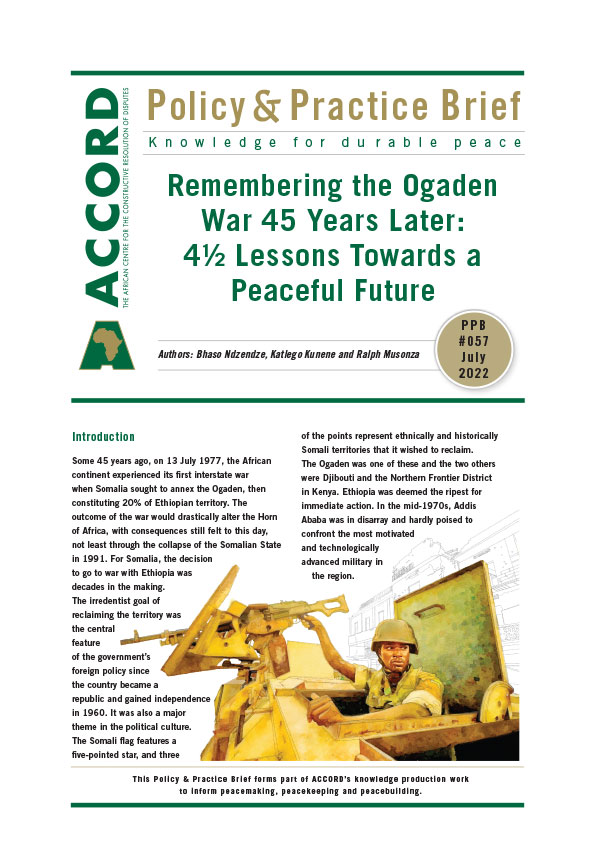
- Policy & Practice Brief
Remembering the Ogaden War 45 Years Later: Four and a Half Lessons Towards a Peaceful Future
45 years ago, Africa was confronted with its first inter-state war when Somalia tried to annex the Ogaden from Ethiopia. This PPB offers insight into the conflict.
Introduction
Some 45 years ago, on 13 July 1977, the African continent experienced its first interstate war when Somalia sought to annex the Ogaden, then constituting 20% of Ethiopian territory. The outcome of the war would drastically alter the Horn of Africa, with consequences still felt to this day, not least through the collapse of the Somalian State in 1991. For Somalia, the decision to go to war with Ethiopia was decades in the making. The irredentist goal of reclaiming the territory was the central feature of the government’s foreign policy since the country became a republic and gained independence in 1960. It was also a major theme in the political culture. The Somali flag features a five-pointed star, and three of the points represent ethnically and historically Somali territories that it wished to reclaim. The Ogaden was one of these and the two others were Djibouti and the Northern Frontier District in Kenya. Ethiopia was deemed the ripest for immediate action. In the mid-1970s, Addis Ababa was in disarray and hardly poised to confront the most motivated and technologically advanced military in the region.
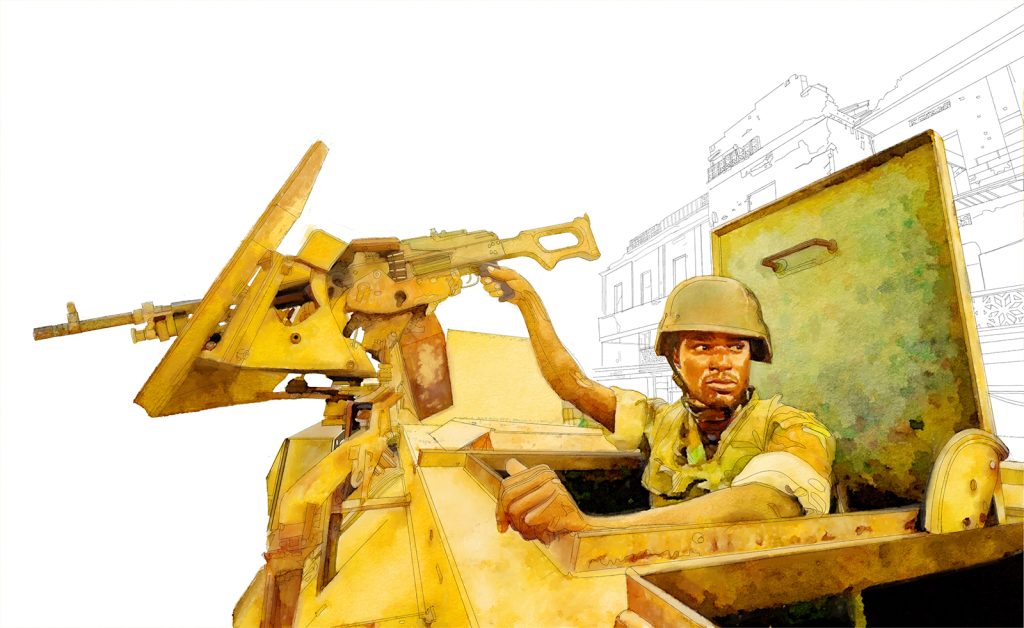
The Imperial Government of Emperor Haile Selassie had collapsed three years earlier in 1974, under conditions of mutiny. The new authority known as the Derg (‘Committee’ in Amharic) was immersed in infighting among different leaders and factions. There was also a raging secessionist war in Eritrea, then in its sixteenth year. On the other hand, the Somalis had a stable regime, tightly run by Colonel Siad Barre, who had come to power in 1969 following the assassination of President Abdirashid Shermarke. Although Barre had not engineered the assassination, he quickly rose to fill the power vacuum. While he was not a democrat (his government proclaimed itself socialist but renamed the country the Somali Democratic Republic), he could count on the popular mood being on his side, as long as he maintained a tough rhetoric and mobilisation against Ethiopia, which his government labelled ‘the Black Colonialist’. Over the years, he had maintained and enhanced support for the Western Somali Liberation Front (WSFL), the pro-secessionist armed rebel militia active in the Ogaden that sought secession from Ethiopia and unification with Somalia. Mogadishu could also count on Soviet and Cuban support, though the 1974 coup brought problems as the new regime had also proclaimed itself socialist. Nonetheless, for the time being, it appeared as though these two foreign allies could be counted on to be neutral at least. In early 1977, Fidel Castro sought to broker peace. One of his proposals was a merger of the two socialist African countries, together with the similarly socialist Yemen across the Red Sea, for the creation of a federation. This was flatly rejected, and the war raged on from July. Eight months later, a truce was declared but the region would never be the same again.
For some time, the war was not adequately studied and understood. The memory of the war was viewed largely through the prism of superpowers (including how it affected détente or led to the incident portrayed in the film Black Hawk Down). Yet, the war has important internal origins and lessons. Encouragingly, recent works26Henderson, Errol A (2015) International Relations Theory and Africa’s Wars in the Postcolonial Era. London: Rowman & Littlefield. See also: Ndzendze, Bhaso (2022) ‘Declarations of Intent: Themes of Interstate War in African National Anthems,’ International Journal of African Renaissance Studies – Multi-, Inter- and Transdisciplinarity, DOI: 10.1080/18186874.2022.2073246. have paid attention to these aspects of this crucial episode, as more attention has been directed to the phenomenon of interstate war and militarised interstate disputes in Africa more broadly. In so doing, scholars have highlighted unrecognised factors that were important in both the long-term and immediate causes and aftermath of the war, and which ought to be closely examined to derive lessons for the Horn of today and of the future.
In this Policy and Practice Brief (PPB), we identify some key lessons that must be contended with, namely: (1) the need to allocate more space to civil society in national and foreign policy through functional democracy; (2) understanding the contagious impact that domestic instability can have on the initiation of interstate (im)balances in the Horn; (3) putting in place mechanisms for managing interstate disputes within Africa, as some have observed that they are set to rise;27Oduntan, Gbenga (2015) ‘Africa’s border disputes are set to rise – But there are ways to stop them’, The Conversation, 14 July, Available at: <https:// theconversation.com/africas-border-disputes-are-set-to-rise-but-there-are-ways-to-stop-them-44264> [Date accessed: 18 July 2021]. (4) what the re-emergence of a reconstructed Somalia may mean for the regional balance; and (5) the role that technologies can play in achieving the first four aims. We discuss each of these in turn, with some caveats, given the unpredictability that surrounds the impact of technologies and the precarity of peace in the region.
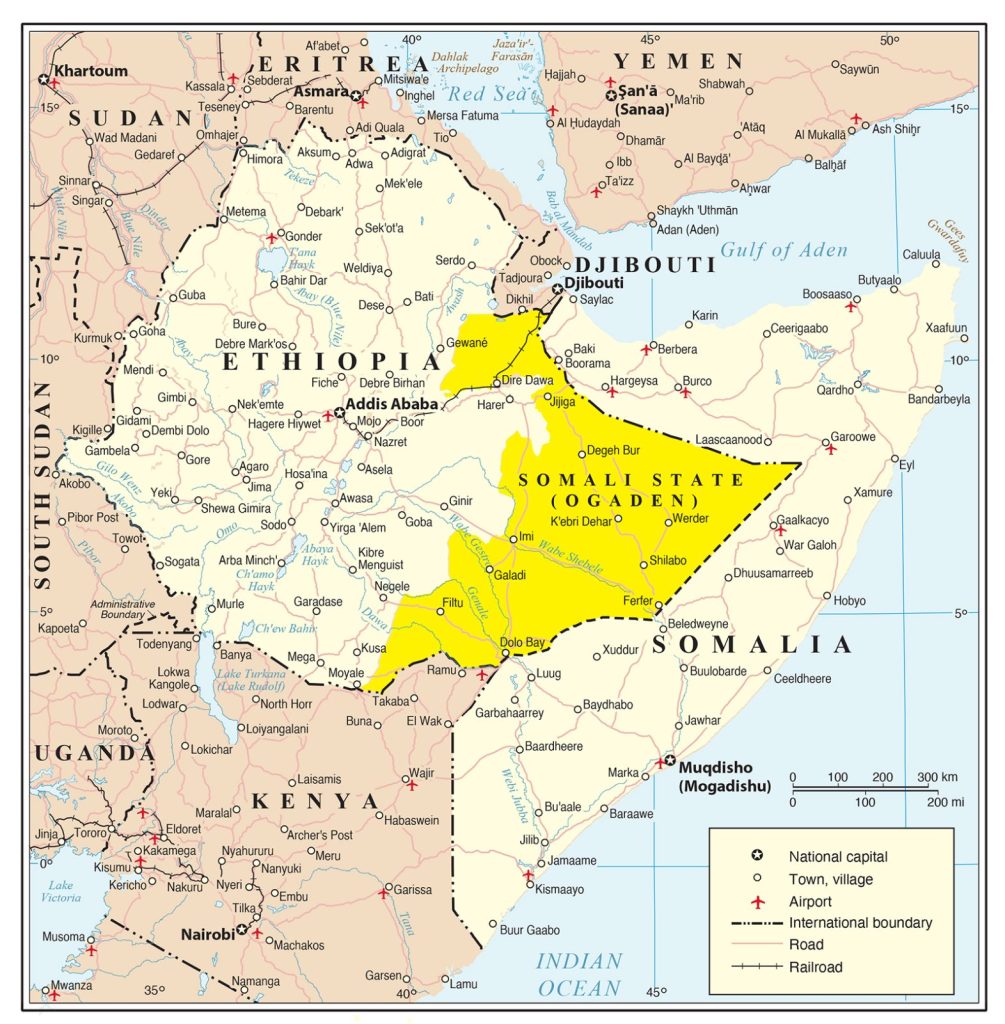
History and bad neighbourliness
Following the Somali decision to invade, there were early successes. Between July and September of 1977, the Somalis controlled as much as 90% of the Ogaden. However, the tide turned in September, when Ethiopians mobilised in great numbers (about 100 000) and pushed back the invading forces and their separatist allies (the WSLF), particularly as they approached strategic military, infrastructural and industrial key points in Dire Dawa.28Laitin, David D. and Samatar, Said S. 1987. Somalia: Nation in Search of a State. Boulder: Westview or Gower. See also Menkhaus, Ken. 2014. ‘Calm between the storms? Patterns of political violence in Somalia, 1950–1980,’ Journal of Eastern African Studies 8(4), 558–572. The Ethiopian effort was also greatly bolstered when the Soviets and Cubans entered the fight on the Ethiopian side, deeming Somalia the aggressor and availing aircraft and some 17 000 personnel, consisting of 11 600 troops and around 6 000 advisers (reportedly causing contempt for Fidel Castro among Somalis to this day).29Africanews (2016) ‘Ethiopians celebrate Castro, Somalis fume at him over 1977 Ogaden war’, 26 November, Available at: <https://www.africanews.com/2016/11/26/ethiopians-celebrate-castro-somalis-fume-at-him-over-1977-ogaden-war> [Date accessed: 18 July 2021]. The decisive blow for Somalia came in February of the following year, when a joint Ethio-Cuban manoeuvre was made against the Somali National Army and the WSLF in the town of Jigija from the air and on the ground, which broke down the stronghold. This paved the way for the recapture of all territories occupied by Somalia since the previous year. Siad Barre ordered a retreat on 9 March 1978. The war resulted in the death of an estimated 60 000 people (15 000 Ethiopian soldiers, 20 000 Somali soldiers, and WSLF fighters, and 25 000 civilians).30Urribares, Ruben (n.d.) ‘The Cuban Air Force in the Ogaden war’, Aviacion Cubana, Available at: <http://www.urrib2000.narod.ru/Etiopia.html> [Date accessed: 18 July 2021]. An additional 600 000 people were displaced.
Following the Somali retreat in March, eight months after the full-scale invasion, the Ethiopians were determined never to become vulnerable to a strong Somalia again. Taking advantage of the mood of disillusionment in Somalia, including a mutiny by some of the senior officers in the Somali National Army beginning in 1978, the Derg government began funding anti-Barre groups that either sought to depose the president or to secede in their own right (one of the consequences of the defeat was a loss of faith in the idea of a ‘Great Somalia’, leading to many retreating to clan identities), especially in the north (modern-day Somaliland). Thus, between 1978 and 1991, the Ethiopian government was engaged in three fights. Firstly, the Ethiopian government’s fight against Eritrean independence. Secondly, the fight against the forces led by the Tigray People’s Liberation Front (TPLF), which was determined to replace the Government of Ethiopia. Thirdly, the Ethiopian government’s fight in Somalia, by funding several rebel militias (as it shifted from a strategy of containment to one of destabilisation towards Somalia).31Yihun, Belete Belachew (2014) ‘Ethiopian foreign policy and the Ogaden War: The shift from “containment” to “destabilization,” 1977–1991’, Journal of Eastern African Studies, 8(4), 677–691. In early 1991, all these fights came to a conclusion. The first two were lost, resulting in a new state in the form of Eritrea and a new government in Ethiopia. The third was in a sense won, as the Siad Barre government itself collapsed. Thus, when Ethiopian Ambassador Dr Asmamaw Qelemu reported back home that ‘the important thing is that Somalia is dangerous no more’, his was a statement of a mission accomplished and a policy fulfilled.32Ibid. For Somalis, however, this was the opening of a dangerous phase, with the state’s absence paving the way for their country to become the site of a brutal civil war among different groups and clan infighting, as well as one that became a hub of terrorism. In total, more than one million Somalis died between 1991 and 2012. After this period, the current Federal Government was finally established and replaced the Transitional Federal Government.
In recent developments in the Horn today, from the Egyptian-Sudanese-Ethiopian dispute over the waters of the Nile to the Tigray War, suspicions are rampant that many governments are seeking to take advantage of the apparent instability in one another’s territories for their own gain. These suspicions are not without basis, given the historical record of bad neighbourliness seen in the support of dissenting and even break-away groups in one another’s territories and its proven success in the lead-up to and aftermath of the Ogaden War. Barre did so with the WSLF and the Derg also with the clan movements and mutiny against the central Somali government in the 1980s. This is termed ‘neopatrimonial balancing’ by the political scientist Errol A. Henderson in his work African Realism? International Relations Theory and Africa’s Wars in the Postcolonial Era.33Henderson, Errol A. (2015) African Realism?: International Relations Theory and Africa’s Wars in the Postcolonial Era, Lanham, MY: Rowman & Littlefield, p. 12. Akin to this, Kenya has reportedly been seeking to use the Jubbaland provincial government to counter the Mogadishu government (which is now in a maritime dispute with Nairobi).34Shaban, Abdur R.A. (2019) ‘Jubbaland vote: Somali govt rejects process, Kenya celebrates Modobe’, Africanews, 23 August, Available at: <https://www. africanews.com/2019/08/23/jubbaland-vote-somali- govt-rejects-process-kenya-celebrates-modobe> [Date accessed: 18 July 2021]. Sudan has been said to be attempting the same through the Benishangul-Gumuz region of Ethiopia (the site of some minor secessionist inclinations, but also the home of the Grand Ethiopia Renaissance Dam).35Ethiopian Embassy to the USA (2021) ‘MoFA condemns Sudan’s claim over Benshangul Gumuz region’, Ethiopian Embassy, Washington DC, 4 May, Available at: <https://ethiopianembassy.org/ mofa-condemns-sudans-claim-over-benshangul-gumuz-region-may-4-2021> [Date accessed: 18 July 2021].
Before the ground becomes ripe for escalation and yet another Ogaden War, civil society can play a crucial role in countering destructive state policies, with war being the most destructive of all such policies. It is worth understanding the role of civil society, and particularly women, in the Ogaden War itself and the reconstruction of Somalia, before we turn to some key lessons in the final section.
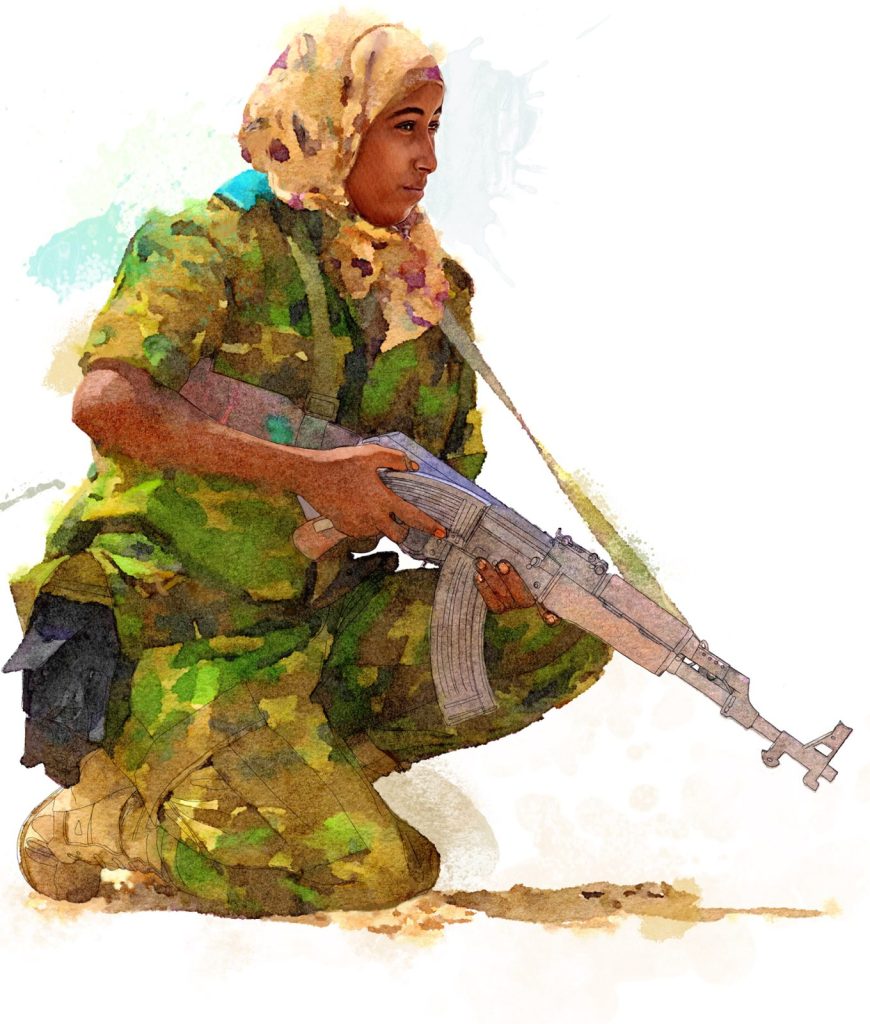
Gendering the Ogaden War
Society’s expectation of women is often confined to the norms of passivity and victimhood. In the context of warfare and gender, one common view may be of male soldiers in combat, with women on the sidelines. Throughout history, stories of female soldiers have not necessarily formed part of the dominant discourses on conflict , which has created a shortfall in the elucidation of the influence women may have in times of war outside of being victims. Without taking away from the gruesome violence inflicted on women in times of war, it would be disingenuous not to explore the role and stories of women who were active in warfare.36UN Security Council (2000) ‘Security Council Resolution on women and peace and security, S/ RES/1325’, UN Peacemaker, October, Available at: <https://peacemaker.un.org/node/105> [Date accessed: 18 July 2021]. Until recently, little scholarly research has been conducted on the active role of women in times of war in the African context, specifically relating to their instrumental influence, rather than the general view of them being victims.37Oluwaniyi,O.O.(2019).‘Women’sRolesandPositions in African Wars,’ in Yacob-Haliso, O., Falola, T. (eds) The Palgrave Handbook of African Women’s Studies. Cham: Palgrave Macmillan. See p. 141. Researcher Remco van Hauwermeiren has put forward a counter-narrative, showing women’s deviation from their socially prescribed dependency roles.38Van Hauwermeiren, Remco (2012) ‘The Ogaden War: Somali women’s role’, Afrika Focus, 25(2), 9–30. There are differing opinions on what traditional roles were expected of Somali women, although some note that women have always been active members of society, be it politically or socially. Van Hauwermeiren notes that members of the WSLF comprised both women and men. In most cases, women were spared from participating in actual combat; however, if there ever was a shortage of men, women would take up arms. Women held a variety of positions and functions in the Ogaden war. Often, the medical caretakers were women who aided injured soldiers, normally within close range of the actual battlefield. Van Hauwermeiren recorded stories from veterans who worked as nurses during the Ogaden war and were active in their own right on the battlefield by collecting soldiers who were injured and sometimes burying the bodies of those who got caught in the crossfire. As traumatic as these stories can be, it contradicts stereotypical perceptions of women by altering the cultural norms imposed on them. In addition to taking up these roles in the Ogaden war, women were working in communications and general logistics occupational work.
During the war, the social elements of life had deteriorated with no sense of normalcy. Gender roles became blurred. Men and women socialised frequently more than ever. During the evenings, women would gather to entertain people in what was known as the danta, although not much information is available on this cultural activity. During the danta, women and men would gather and dance, while singing songs of upliftment. This musical ritual. was necessary for the morale of the fighters. Women played an important part during the danta by giving words of encouragement, which often fuelled the soldiers to continue with the fight and crush their opponents. Mobilising and establishing initiatives that would afford soldiers resources were managed by women in groups such as the Hooyooyin (‘The Mothers’). They played an imperative role in hauling support from the Somali government.
However, the end of the war, and the collapse of the Somali state that followed, spelt doom for many women and girls, as the state gave way to customary law (or the Xeer in Somali).
The role of customary law in governing the lives of Somali people after the central government collapsed in 1991 was especially prevalent in the regions of Somaliland, Puntland, and south-central Somalia. Somali customary law is said to comprise ‘a set of unwritten conventions and procedures that are passed down orally through generations’.39Osman, Abdulrahman (2010) ‘Order out of chaos: Somali customary law in Puntland and Somaliland’, ACCORD, 21, Available at: <https://www.c-r.org/ accord/somalia/order-out-chaos-somali-customary-law-puntland-and-somaliland> [Date accessed: 18 July 2021]. Osman explains how these ‘define reciprocal rights and obligations between kin and clans, covering domestic matters, social welfare, political relations, property rights and the management of natural resources’.40Ibid. Xeer is practised through a council of elders who adjudicate on matters that are brought to them. Xeer is also applied in mediating issues and preventing conflict in the Somali regions where it is practised. Unfortunately, Xeer has often been abused and used against some of the most vulnerable and powerless, specifically women and girls. Those in control have often wielded it to discriminate against women and girls, and when women want to seek justice for crimes committed against them, they are left disadvantaged by this law. Thus, crimes committed against women are considered unimportant and unlikely to be investigated. The council of elders who must adjudicate on matters concerning women and girls often consists of men, which may lead them to rule in a biased way against women and girls. According to the United Nations Population Fund (UNFPA), Somalia ranks as fourth-lowest in gender equality41UNFPA (2020) ‘Case study: Somalia funding for gender equality and the empowerment of women and girls in humanitarian programming’, UN Women and UNFPA, June, Available at: <https://www.unfpa.org/sites/default/files/resource-pdf/funding-for- geewg-in-humanitarian-programming-somalia-en.pdf> [Date accessed: 18 July 2021]. and only 24% of the 329 seats in its Parliament are occupied by women.42Bhalla, Nita and Omer, Mohammed (2020) ‘Somali women demand guarantee of 30% of Parliament in 2021 election’, Reuters, 28 October, Available at: <https://www.reuters.com/article/us-somalia-women-politics-trfn-idUSKBN27D1S9> [Date accessed: 18 July 2021]. The call for the quota to be increased to 30% was accepted by President Mohamed Abdullahi Mohamed in 2020. Not much gender reform has taken place, however, and Parliament remains male-dominated.
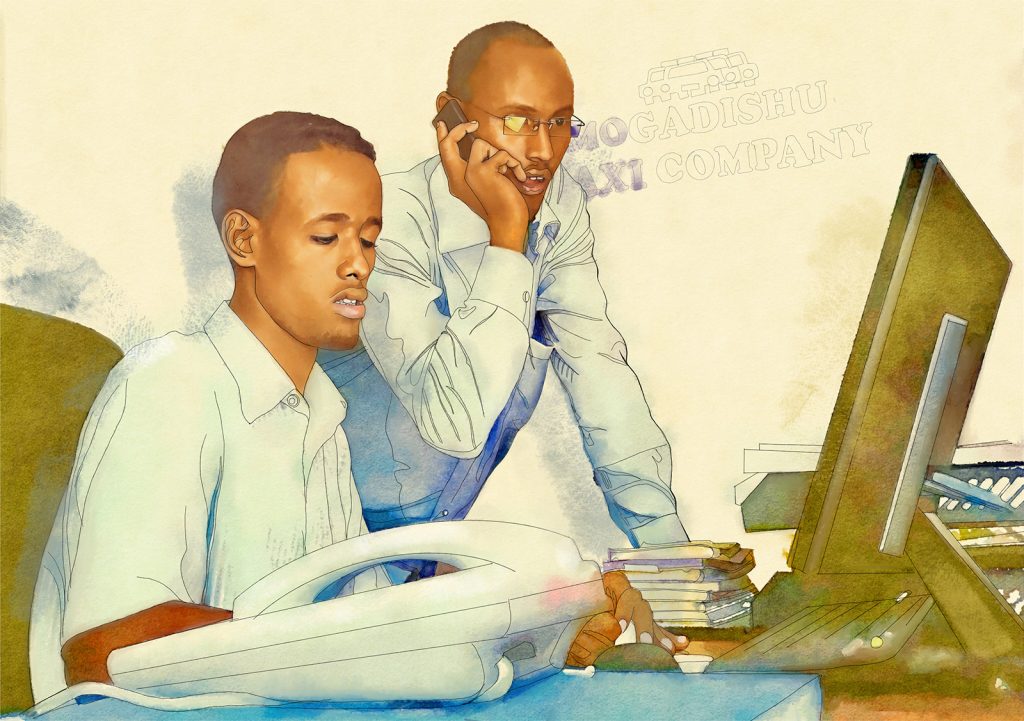
A reconstructed Somalia: Managing domestic and regional anxieties
The role that civil society has had in Somalia’s reconstruction is helping to provide essential services that the central government was failing to when it collapsed in 1991. Somali civil society has helped in ensuring that peace is maintained in the country, as well as helping prevent conflict and promoting the safety and wellbeing of Somali people. The estimated number of non-governmental organisations (NGOs) functioning in Somalia was 81 in 2021.43Shermark, Aden (2021) ‘NGOs in Somalia: An overview’, Geneva Business News, 25 March, Available at: <https://www.gbnews.ch/ngos-in-somalia-an-overview> [Date accessed: 18 July 2021]. This is an important figure, as it shows the number of NGOs that are working towards contributing to peace and stability in Somalia and promoting the safety and wellbeing of its people.
There are currently about two million Somalis living outside Somalia, mostly in Kenya, Ethiopia, Yemen, the US, and the UK.44Kleist, Nauja and Abdi, Masud S.I. (2022) ‘Global connections: Somali diaspora practices and their effects’, ReliefWeb, 10 March, Available at: <https://reliefweb.int/report/somalia/global-connections-somali-diaspora-practices-and-their-effects> [Date accessed: 18 July 2021]. The median age in Somalia is 16.7 years, with youths aged between 15 and 29 making up 29% of the population.45Worldometer (2020) ‘Somalia population’, Available at: <https://www.worldometers.info/world-population/somalia-population> [Date accessed: 18 July 2021]. The diaspora has been crucial in the rebuilding efforts, particularly in bringing investment and international networks that have proven useful in the growth of the country’s economy. But the path to stability, either internally or externally, is not linear. To begin with, there are still clan interests which permeate every sphere of governance, as well as tensions between the diaspora and those who never left (delved into in painstaking detail in Andrew Harding’s critically acclaimed 2016 book The Mayor of Mogadishu). Somalia, as the statistics show, is a mostly young nation. But the memory of the Ogaden lives on, including on social media.46Africanews(2016)op.cit. The country also has a worryingly high rate of youth unemployment (at about 67%).47Desai, Raj M. (2019) ‘Somalia’s path to stability’, Brookings, 2 October, Available at: <https://www.brookings.edu/blog/ future-development/2019/10/02/somalias-path-to-stability> [Date accessed: 18 July 2021]. In recent years, moreover, as the country stabilises, some politicians in Somalia have sought to use the idea of an external ‘other’ and the idea of Greater Somalia (‘Somali-weyn’) in attempts to win popular support.48Africa Intelligence (2012) ‘Farmajo gains the upper hand on Kenyatta in Jubaland’, 23 March, Available at: <https://www.africaintelligence.com/eastern-africa-and-the-horn/2021/03/26/ farmajo-gains-the-upper-hand-on-kenyatta- in-jubaland,109653350-art> [Date accessed: 18 July 2021]. This has meant opening up old notions of irredentism. This is inevitable to some degree, given the anarchic nature of the structure of the international system. There are incentives for bad neighbourliness among regional players. For Somalia, however, the task is monumental: to rebuild itself while diminishing fears that its reconstruction may give way to resurgence and the renewed pursuit of Somali-weyn.
Four (and a half) lessons
Technology can be a useful tool in the implementation of four lessons from the Ogaden War. Firstly, increased mobile and Internet penetration can be a means of linking Somali citizens and their regional neighbours to overcome potential distortions by their respective governments. Unlike during the Barre period, moreover, there is wider scope for civil society participation. Civil society can, therefore, proactively forge regional dialogue and citizen buy-in for the peaceful resolution of potential disputes. Social media is a useful tool for mobilisation across vast distances. Secondly, and in relation to this, the African Union (AU) can be a source of factual information through a commonly and easily accessible repository of information for consumption by citizens and civil society. Thirdly, a more decisive approach by the AU and national governments against misinformation, in general, is required. There should be clear protocols against spreading conflict-inciting information for both governmental and non-governmental actors, with the African Peer Review Mechanism (APRM) also integrating this criterion into its evaluation of countries. Fourth and finally, the digital age presents opportunities for fostering economic interdependence through mutual initiatives and ventures involving citizens in countries across the region. One factor behind the escalation of the dispute over the Ogaden was the lack of commercial linkages and trade flows between Ethiopia and Somalia. Indeed 0.018% of total Ethiopian imports in 1975 was the peak share ever represented by Somalia in the 1970s.49Ndzendze, Bhaso (2020) Explaining East Africa’s interstate wars, 1977-2000: Towards a typological theory? PhD thesis, Department of International Relations, University of the Witwatersrand, Available at: <https://wiredspace.wits.ac.za/bitstream/ handle/10539/30715/Ndzendze-PhD-ETD-upload. pdf?sequence=2&isAllowed=y> [Date accessed: 18 July 2021]. There was thus very little to give either state incentive for maintaining peace. The emergence of a new technological era and knowledge economy in which Africa risks being left behind50Ndung’u, Njuguna S. and Signé, Landry (2020) ‘Capturing the Fourth Industrial Revolution: A regional and national agenda’, Africa Portal, 6 February, Available at: <https://www.africaportal.org/publications/capturing-fourth-industrial-revolution-regional-and-national-agenda> [Date accessed: 18 July 2021]. presents imperatives for fresh, collaborative thinking and nullifies old territorial tussles, or at the very least, presents avenues for them to be resolved peacefully.
Ndzendze, Kunene and Musonza are researchers at the 4IR and Digital Policy Research Unit in the Department of Politics and International Relations at the University of Johannesburg. They write in their personal capacities.
